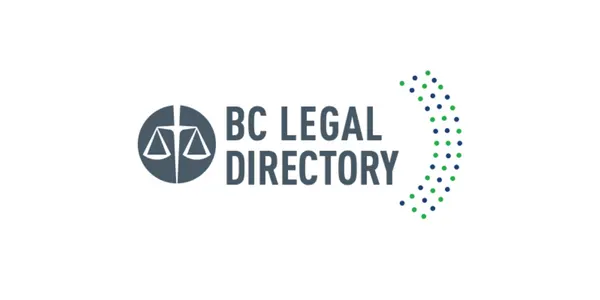
If I make and employment standards complaint, can my employer point to my complaint as a reason to fire me?
You’re unhappy with something at work. You’ve tried unsuccessfully to resolve it directly with your employer. Or you’re afraid to raise the issue with them. One option to explore is making a written complaint to the BC Employment Standards Branch. This is a provincial government office that helps workers and employers resolve problems. We explain the steps involved in making an employment standards complaint.
What you should know
Most workers in British Columbia are protected by the BC Employment Standards Act. This is the main law protecting workers in the province. If you’re seen to be an “employee,” you can make an employment standards complaint. But not everyone is covered by this law.
For example, independent contractors aren’t covered (they’re considered to be self-employed and so not an “employee”). Nor are workers in industries regulated by the federal government. Or people in certain licensed professions.
To learn if you’re covered, see our page on who’s covered by BC’s employment standards law.
| You work... | You can complain to |
|---|---|
| in a federally-regulated workplace, such as a bank or telecommunications company | Employment and Social Development Canada |
| in certain licensed professions, such as doctors, accountants, architects, and realtors | the body that regulates the profession |
| as a member of a union | your union representative |
Under the Employment Standards Act, there’s a strict time limit to make a complaint in some circumstances.
If your employment has ended, you have up to six months after your last day of work to bring a complaint.
For certain complaints relating to hiring, you have up to six months from the time the problem took place. For example, if when you were hired an employer misrepresented the type of work or the wages, you have six months to make a complaint from when the misrepresentation was made.
While you are employed, you can make a complaint at any time. The Employment Standards Branch reviews issues that took place within a year of your complaint.
Typically, people file complaints with employment standards about things like vacation pay, overtime pay, stat holiday pay, and severance pay owed based on length of service in a job.
You can’t use the employment standards process for certain other types of complaints. For example:
additional severance pay on top of length of service minimums
discrimination or harassment in the workplace
unsafe conditions or injuries at work
If your concerns fall in any of those categories, there are other avenues you can pursue. See our information on notice requirements, discrimination at work, and workers’ compensation.
Under the Employment Standards Act, there's a limit on the lost wages that can be recovered through an employment standards complaint. Only wages owing during the 12 months before you brought your complaint or left your job are recoverable (except in the case of vacation pay, which generally has a longer claim period).
A common fear is that if you complain on the job, your boss will brand you a troublemaker and fire you.
Your boss can’t do that. An employer can’t point to an employment standards complaint as a reason to fire you — this is called "retaliation" and it's illegal. But realize that a complaint is the equivalent of accusing your employer of breaking the law. It carries a very nasty sting and has the potential to burn bridges.
And keep in mind you can be let go for no reason. That’s as long as the employer gives you the required notice or severance pay under your employment contract (or at least the minimum under the law).
This shouldn’t deter you from making a formal complaint when you’ve suffered a true injustice — like going many weeks without getting paid. But if it’s a less weighty complaint, perhaps a talk with or a letter to your boss can be the first step.
Another common fear is the backlash. You’ll be in your employer’s “bad books” if you complain about something.
But an employer can’t mistreat you for making a complaint to the Employment Standards Branch. Under the law, an employer can’t do any of these things in response to your complaint:
fire you or threaten to fire you
withhold your pay
discriminate against you
intimidate or impose a penalty on you
refuse to hire you
Steps to make the complaint
A formal complaint can be an ordeal. It can involve many documents, meetings, and compromises. Don’t expect things to be cleared up overnight.
Consider whether a hard talk might be a better plan. Sure, a hard talk is … hard. But if it doesn’t feel impossible, it may be the better way to go. Or at least, the better place to start.
The Employment Standards Branch has agents you can reach by phone or email. See the branch contact information. Sometimes these agents can help you find a workaround.
Alert!
There’s a time limit in some circumstances to bring an employment standards complaint. For example, if your employment has ended, you have up to six months after your last day of work to make a complaint. For more on the time limits, see above, under “What you should know.”
A complaint to the Employment Standards Branch must be made in writing. You can make a complaint in either of these ways:
Using the online complaint form, type information into the form and submit it.
Using the printable complaint form, fill out the form on the computer or on paper, and mail or drop off the completed form at the Employment Standards Branch nearest you.
Attach any relevant documents with your complaint. These might include emails or letters that relate to the issue, your paystubs (if part of your pay was missing, for example), your timesheets, your written employment contract (if you have one), or the termination letter (if your complaint relates to being fired).
There’s no charge for bringing a complaint.
You can ask to remain anonymous
You can request in writing that your contact information not be disclosed to your employer. An employer cannot fire you, refuse to employ you, or otherwise mistreat you for making a complaint.
After you submit your complaint, the Employment Standards Branch will consider it. They will contact you and the employer. The branch may handle your complaint by:
scheduling a mediation session,
investigating, or
scheduling a complaint hearing.
The Employment Standards Branch may offer to resolve your complaint through mediation. Mediation is a meeting between you and your employer together with a neutral third party called a mediator. It may be a face-to-face meeting or a teleconference.
“Neutral” means the mediator is impartial. They don’t represent either party, act as an adviser, or provide legal advice. They have no decision-making authority, and can’t make a ruling on any of the issues. Their job is to help the two sides tackle the problem and reach a solution.
If mediation solves the problem, the mediator will help you prepare a document called a “settlement agreement.” Both parties will sign the agreement and each will receive a copy. Once it’s signed, it becomes a legal document that can be filed and enforced at the BC Supreme Court.
If you can’t reach an agreement, the matter will proceed to a complaint investigation or hearing.
Mediations are conducted "without prejudice"
The mediation session is conducted “without prejudice.” This means that nothing said during the session can be used in a later hearing by either party. Any documents submitted in the mediation, however, will be sent to the adjudicator for hearing.
The Employment Standards Branch may schedule a complaint hearing to decide if your employer has broken the law. This is also called an adjudication hearing. Many hearings are held by conference call, but some are held in person.
You’ll receive a notice of complaint hearing, which will tell you what to do.
The hearing is conducted by an officer of the Employment Standards Branch, called an adjudicator. The adjudicator’s job is to hear the backstory of the complaint from both sides. Both you and your employer present evidence. This includes any relevant documents. You also have the right to call witnesses to give evidence.
At the end of the hearing, the adjudicator will issue a written decision, called a determination. The determination is a legal document. It can be filed and enforced in the BC Supreme Court.

If you’re not happy with the determination made at your complaint hearing, you have the right to appeal it. The appeal is brought to the Employment Standards Tribunal.
The tribunal rules set out the following grounds for appeal:
You think the adjudicator applied the law incorrectly.
You don’t think the adjudicator observed the principles of natural justice (for example, you think the decision-making process was unfair to you).
More evidence has become available that wasn’t available at the time of the hearing.
The time limit for filing an appeal is 21 days after the date you were served with the determination, if you were served personally, by fax, or electronically. It’s 30 days if you were served by registered mail.
You must fill out an appeal form in form 1 and deliver it to the tribunal. The tribunal has a guide to filling out the form.
On the appeal, the tribunal may confirm, change or cancel the determination. It may also choose to refer the matter back to the adjudicator for reconsideration. You’ll get a copy of the written reasons for the tribunal’s decision.
Who can help

Employment Standards Branch
The BC government office that deals with complaints against employers.

Employment and Social Development Canada
Deals with complaints against employers in federally-regulated industries.

Access Pro Bono's Free Legal Advice
Volunteer lawyers provide 30 minutes of free legal advice to people with low or modest income.

Access Pro Bono’s Everyone Legal Clinic
Clinicians provide affordable fixed-fee services on a range of everyday legal problems.

Lawyer Referral Service
Helps you connect with a lawyer for a complimentary 15-minute consult to see if you want to hire them.

BC Legal Directory
Search for a lawyer by community or legal issue. From the Canadian Bar Association, BC Branch.

